News
Awards at MICCAI and IEEE VIS 2016
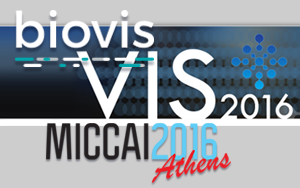 With fall conferences in full swing, the SCI Institute and our alumni had an amazing showing.
With fall conferences in full swing, the SCI Institute and our alumni had an amazing showing.Alex Bigelow and SCI alumnus Roni Choudhury, who, along with Jeff Baumes from Kitware received the Visualization in Practice Best Paper Award at the IEEE Visualization Conference for their paper: Resonant Laboratory and Candela: Spreading your Visualization Ideas to the Masses. Chris Johnson was a participant in the panel: Pathways for Theoretical Advances in Visualization, moderated by Min Chen, which won the best panel award at the IEEE Visualization Conference. The other panelists included Georges Grinstein, Jessie Kennedy, Tamara Munzner, and Melanie Tory. Finally, congratulations to SCI Alumnus Julien Tierny, who with Hamish Carr received the Scientific Visualization Best Paper Award at the IEEE Visualization Conference for their paper: Jacobi Fiber Surfaces for Bivariate Reeb Space Computation.
Yong Wan recieved best poster at BioVis for his display of the functionality and application of FluoRender.
Caleb Rottman, who was a finalist for the MICCAI 2016 Young Scientist Award for his paper: Diffeomorphic Density Registration in Thoracic Computed Tomography. Caleb Rottman, Ben Larson, Pouya Sabouri, Amit Sawant, Sarang Joshi. Also at MICCAI, recent SCI Alumnus Miaomiao Zhang (Ph.D. 2015), was another of the finalists for the Young Scientist Award for her paper: Low-Dimensional Statistics of Anatomical Variability Via Compact Representation of Image Deformations. Miaomiao Zhang, William Sandy Wells, Polina Golland.
Fluorender 2.20 Released
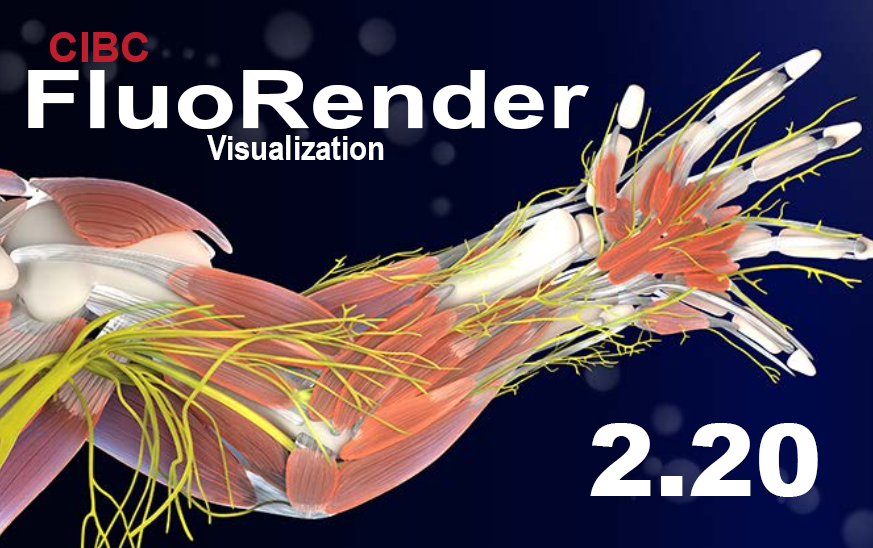 We are excited to announce the latest release of FluoRender, version 2.20, which incorporates improvements, bug fixes, and new features.
We are excited to announce the latest release of FluoRender, version 2.20, which incorporates improvements, bug fixes, and new features.You can download FluoRender here
New Features:
- Clustering algorithms. Three clustering algorithms for segmentation are added: expectation-maximization on Gaussian mixture, DBSCAN, and k-means. Users can use these methods in the "Component" window.
- Improved tracking algorithms. Tracking accuracy has been improved. We improved the algorithm for generating the track map and incorporated clustering algorithms to automatically segment during tracking. Users can also adjust a series of parameters in the "Tracking" window to fine tune the tracking.
- A new 4D script for tracking sparse particles. The 4D script allows users to track selected features in a time sequence. No initial segmentation is required for it to work. It can be used to track sparse and small features conveniently.
- A density setting for component generation. The density setting has been added in the basic component generation. Its concept is based on the clustering algorithm DBSCAN. However, its implementation is based on the synthetic brainbows algorithm, which uses GPU to compute segmentation of dense data sets.
- Render view output enlargement. The option has been added when the render view is captured and saved as an image. Users can set an output image size larger than the render view size.
- 4D script list. The list of built-in 4D scripts has been added to the "Record/Export" panel. Users can easily select and switch 4D scripts without browsing to the actual files.
Alex Lex, Bei Wang Phillips, and Chris Johnson present at the Future in Review Conference
 Alex Lex, Bei Wang Phillips, and Chris Johnson were chosen to present at the Future in Review Conference held at the Stein Eriksen Lodge in Park City, Utah.
Alex Lex, Bei Wang Phillips, and Chris Johnson were chosen to present at the Future in Review Conference held at the Stein Eriksen Lodge in Park City, Utah. What is Future in Review? Hosted by Mark Anderson, founder and publisher of the Strategic News Service™, the Future in Review® (FiRe) conference exposes world experts and participants to new ideas in a manner that produces an accurate portrait of the future in technology, including the global economy, cloud computing, biology and medical diagnostics, policy, netbooks, space travel, sustainability, and other fields that contribute to technology outcomes. (Strategic News Service and the SNS weekly global report have been accurately predicting the technology industry's future since 1995.)
This year's theme was titled "The Power of Flows."
Photo courtesy of Kris Krüg
Visualizing the Universe
 Utah engineers co-developing space simulation software for planetariums and home computers.
Utah engineers co-developing space simulation software for planetariums and home computers.
Sept. 7, 2016 – If space is the final frontier, OpenSpace could become the final frontier in space simulation software.Computer scientists from the University of Utah will be working with researchers from New York University's Tandon School of Engineering and the American Museum of Natural History (AMNH) to develop OpenSpace, an open-source 3-D software for visualizing NASA astrophysics, heliophysics, planetary science and Earth science missions for planetariums and other immersive environments. The software also will be developed for use in schools and on home computers.
Scientific visualizations: A bridge to knowledge
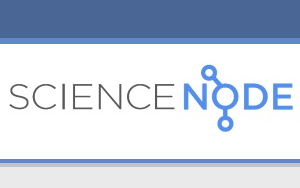 Chris Johnson speaks with ScienceNode on visualizations as a collaborative process of discovery, and a crucial step on path to knowledge.
Chris Johnson speaks with ScienceNode on visualizations as a collaborative process of discovery, and a crucial step on path to knowledge.Read the full article here.
Fluorender 2.19.4 Available
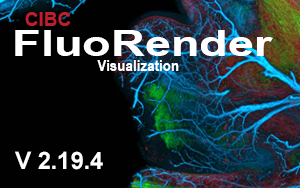 We are excited to announce the latest release of FluoRender, version 2.19.4, which incorporates improvements, bug fixes, and new features.
We are excited to announce the latest release of FluoRender, version 2.19.4, which incorporates improvements, bug fixes, and new features.Download FluoRender
In this release, we mainly improved the usability of a series of functions for 4D analysis, including the component analyzer, 4D scripts, paint brush tools, and format supports. We have also made a series of video tutorials and published them on YouTube.
Bei Wang Joins the Scientific Computing and Imaging Institute as an Assistant Professor of Computer Science
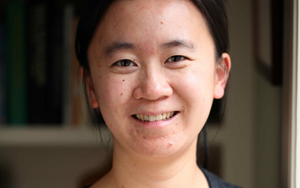 Bei Wang has joined the University of Utah's Scientific Computing and Imaging (SCI) Institute as an Assistant Professor of Computer Science. The SCI Institute focuses on solving important problems in biomedicine, science, and engineering using computation and is an international research leader in the areas of scientific computing, visualization, and image analysis.
Bei Wang has joined the University of Utah's Scientific Computing and Imaging (SCI) Institute as an Assistant Professor of Computer Science. The SCI Institute focuses on solving important problems in biomedicine, science, and engineering using computation and is an international research leader in the areas of scientific computing, visualization, and image analysis.Dr. Wang received her Ph.D. in Computer Science from Duke University in 2010. There, she also earned a certificate in Computational Biology and Bioinformatics. She was a postdoctoral fellow from 2010 to 2011, and a research scientist from 2011 to 2016, both at the SCI Institute, University of Utah.
Making Sense of Data Now Available
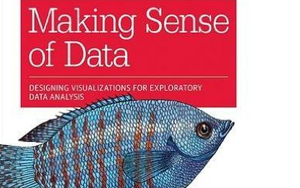 Making Sense of Data, by Miriah Meyer and Danyel Fisher now available for pre-order from Amazon.
Making Sense of Data, by Miriah Meyer and Danyel Fisher now available for pre-order from Amazon.From Amazon: You have a mound of data sitting in front of you and a suite of computation tools at your disposal. And yet, you're stumped as to how to turn that data into insight. Which part of that data actually matters, and where is this insight hidden?
If you're a data scientist who struggles to navigate the murky space between data and insight, this book will help you think about and reshape data for visual data exploration. It's ideal for relatively new data scientists, who may be computer-knowledgeable and data-knowledgeable, but do not yet know how to create effective, explorable representations of data.
NeuroImage Journal Cover Features SCIRun Renderings
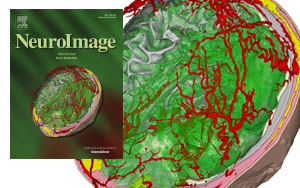 The publication and cover image is the result of a close collaboration between the University of Freiburg (Lukas Fiederer, Tonio Ball and others) in Germany and the NIH-funded Center for Integrated Biomedical Computing (CIBC, Moritz Dannhauer) at the SCI institute (Johannes Vorwerk). The cover of NeuroImage' March (128) issue illustrates different tissues in a model of the human head that are known to have distinct electrical properties. In this study, we simulated the electrical effect of blood vessels on current flow originating from active brain regions as monitored by scalp electrodes (encephalography, EEG). Since the understanding of EEG measurements matters in many clinical applications (e.g., epilepsy), SCIRun software offers a set of tools to investigate their underlying electrical generators. Recently, in the new version 5.0 of SCIRun additional capabilities (BrainStimulator) have been added to simulate the current flow from external stimulation devices targeting brain regions of potential EEG generators.
The publication and cover image is the result of a close collaboration between the University of Freiburg (Lukas Fiederer, Tonio Ball and others) in Germany and the NIH-funded Center for Integrated Biomedical Computing (CIBC, Moritz Dannhauer) at the SCI institute (Johannes Vorwerk). The cover of NeuroImage' March (128) issue illustrates different tissues in a model of the human head that are known to have distinct electrical properties. In this study, we simulated the electrical effect of blood vessels on current flow originating from active brain regions as monitored by scalp electrodes (encephalography, EEG). Since the understanding of EEG measurements matters in many clinical applications (e.g., epilepsy), SCIRun software offers a set of tools to investigate their underlying electrical generators. Recently, in the new version 5.0 of SCIRun additional capabilities (BrainStimulator) have been added to simulate the current flow from external stimulation devices targeting brain regions of potential EEG generators.
Best Paper Award at PacificVis 2016
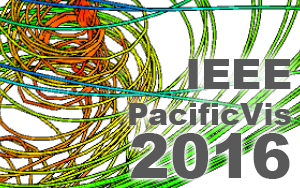 Congratulations Bei and Valerio and SCI alumni: Paul Rosen, Guoning Chen and Harsh Bhatia who were awarded Best Paper at IEEE PacificVis 2016.
Congratulations Bei and Valerio and SCI alumni: Paul Rosen, Guoning Chen and Harsh Bhatia who were awarded Best Paper at IEEE PacificVis 2016.Critical Point Cancellation in 3D Vector Fields: Robustness and Discussion Primoz Skraba (Jozef Stefan Institute), Paul Rosen (University of South Florida), Bei Wang (University of Utah), Guoning Chen (University of Houston), Harsh Bhatia (Lawrence Livermore National Laboratory), Valerio Pascucci (University of Utah)
Science-ArtQuiz
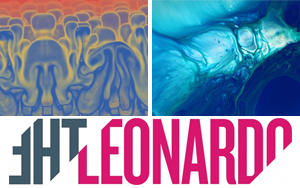 The SCI Institute recently contributed to the Science-ArtQuiz with the Leonardo. Can you distinguish Science from Art???
The SCI Institute recently contributed to the Science-ArtQuiz with the Leonardo. Can you distinguish Science from Art???Paintbrush or microscope? Einstein or Picasso? Is there any difference? Challenge your inner genius with this unique, mind bending science vs art quiz. Can you get a perfect score?
Take the quiz at http://www.theleonardo.org/science-artquiz/




